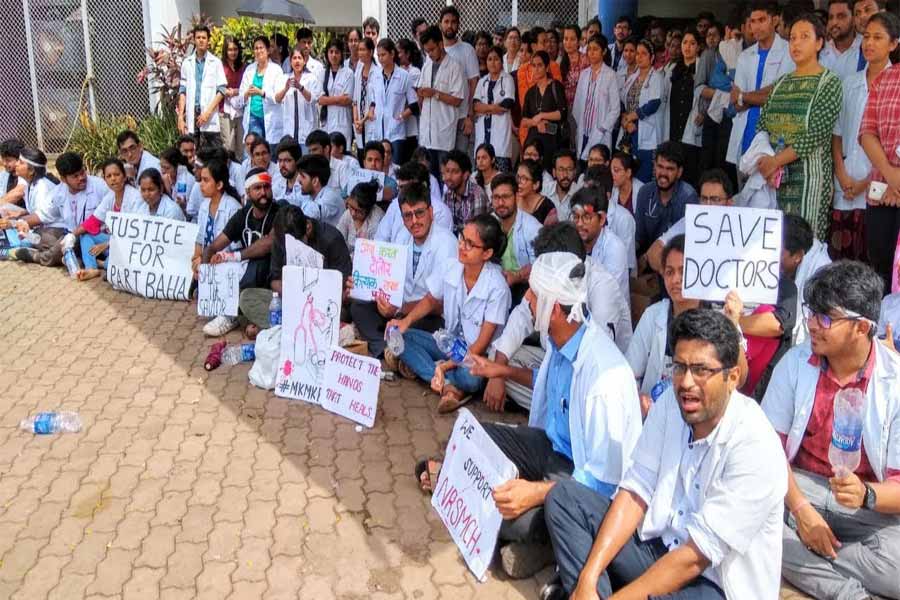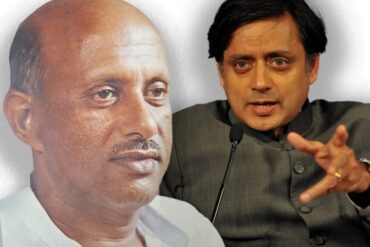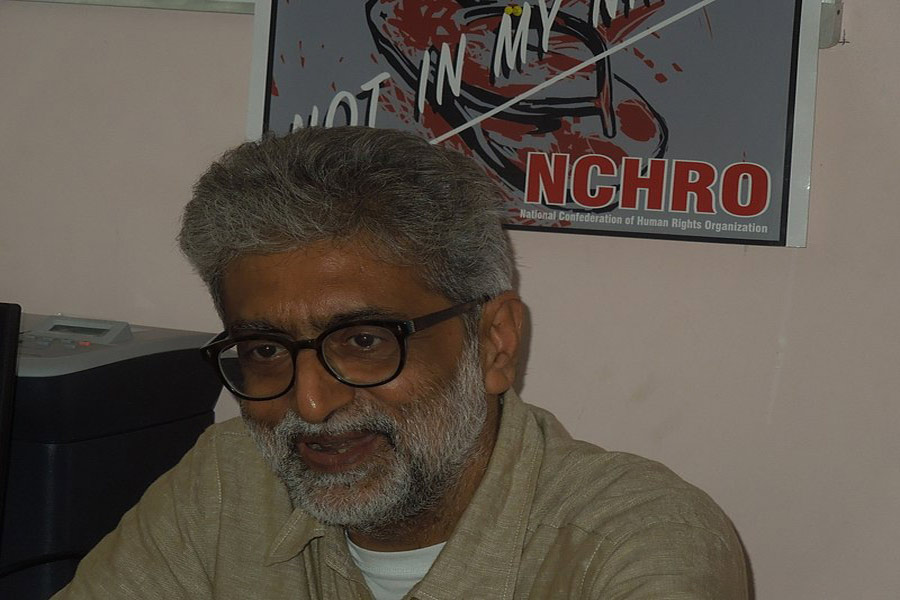
West Bengal’s healthcare system is tottering back to normal after the junior doctors at government-run hospitals ended their week-long strike following talks with chief minister Mamata Banerjee on Monday.
The strike which was called to protest the assault on a junior doctor at Kolkata’s Nil Ratan Sircar Medical College and Hospital allegedly by a kin of a dead patient had snowballed into a major nation-wide stir with ramifications in the healthcare sector across the nation.
While the storm seems to have abated for now and, Mamata Banerjee has emerged from it unhurt—even scoring some brownie points with her affability in the live-televised meeting with interns at her office—the episode merits deeper analysis.
It is necessary, firstly, to understand why it managed to bring out the worst in the chief minister who plumbed new depths with her “speak Bengali in Bengal” rhetoric. And, secondly, why this incident snowballed into such a major political crisis in the state, and the subsequently the nation.
Raw Nerve
Health has always been Banerjee’s first love. Ever since she came to power in West Bengal, she has accorded the department the highest priority, evident in the fact that she has always kept the ministerial portfolio to herself. To her credit, she has brought about much improvement in the ailing government healthcare system, which, along with education, had suffered extreme neglect during the erstwhile Left regime.
Her multi-pronged reform measures have significantly improved the delivery of healthcare services in urban and rural Bengal alike. For all the criticisms against her, the first thing positive that is often spoken of her is how she has transformed government hospitals. They may be far from perfect, but for the vast majority of the population dependent on state-run healthcare, the availability of doctors and medicines, and the “much-cleaner wards”, has made a difference.
An agitation by doctors—coming at a time when the chest-thumping Bharatiya Janata Party is making great strides in the state—touched a raw nerve. It hit Banerjee where it hurt most. If the 18/42 score of the BJP in the just-concluded Lok Sabha elections was the diagnosis, the agitation was a tell-tale symptom of the extent to which she has become disconnected with people running her pet department and, in the current political climate, how it could threaten her very existence. At one point, especially when about 500 government doctors tendered their resignations in protest against her inaction, it looked as if she was finally set to meet her Waterloo.
She handled it the only way she knows—confrontational, without addressing the real issue. Without batting an eyelid, she accused the agitation to be spearheaded by “outsiders” and called for a Bengal where everyone spoke Bengali. While Banerjee was partly correct in smelling the role of the Opposition in fomenting trouble for her, she was wholly wrong to see the agitation only as a conspiracy of the opposition and “outsiders”, all pitted against her. For the doctors, this was another instance where she would not stand up for them.
Festering fear
Doctors’ outburst is not the outcome of a day’s work. Even without the help of the BJP—the party is alleged to have fished in troubled waters and aided in the spread of the agitation nationwide—this was a disaster waiting to happen.
While the healthcare machinery in the state has improved, Banerjee never really endeared herself to the healthcare providers, especially the doctors. Her patient-friendly approach became proportionately doctor-unfriendly too. Greater accountability was expected of doctors and health officials who felt they were on their toes all the time.
What had them genuinely worried and feeling insecure was political pressure coupled with hooliganism. They feared mobs led by low-level political leaders making impossible demands or protesting perceived negligence. Not just outsiders, they feared their own crony bosses in the department who could be vindictive and even get them suspended or embroiled in departmental proceedings in order to please the political establishment.
Banerjee’s move to regulate the private sector with the West Bengal Clinical Establishments (Registration, Regulation and Transparency) Bill 2017—one of the objectives was to make them charge patients “reasonably” for the services they offer—brought her foes from the private sector too.
“She is a total tyrant and a megalomaniac,” said a Siliguri-based general physician on conditions of anonymity. “She can do anything and she has her cronies all around who can wreak havoc with your career for the slightest reasons. Forget government doctors, even private doctors remain in fear that their licences may not be renewed if they somehow slide into her bad books.”
Mission suspension
Banerjee has been quick to press the suspension button, many times unjustified, as a remedy for all ills. Soon after assuming power in 2011, she began conducting surprise inspections of government-run hospitals. After one such visit to Bangur Institute of Neurology in Kolkata, she suspended the director, S. P. Gorai. All he did was to complain of crowding by curious onlookers and media persons at the hospital, caused by her unannounced visit. The neurosurgeon had to miss several important surgeries following the suspension.
In 2014, Banerjee suspended three senior health officials, including the Chief Medical Officer, at the North Bengal Medical College and Hospital during an encephalitis outbreak in north Bengal, on charges of “suppressing facts” and not providing information to the state government on time. Without the top officials, the task of fighting the outbreak had got even more difficult for the staff.
In 2017, she suspended Arunachal Dutta Choudhury, a doctor at Barasat District Hospital, for a Facebook post. He had claimed that around 500 people were admitted to the hospital on October 6, narrating the difficulties in diagnosing the patients, many of them lying on the floor as the hospital lacked the facilities. That was a time when 19 people had died in state-run hospitals and there were widespread allegations that the Mamata Banerjee government was trying to supress data on the dengue outbreak.
Bitter pill
As the angst of the doctors’ community festered, BJP slowly worked its way into the rank and file of the medical profession. On the day of election results, many doctors were seen celebrating with sweets in Siliguri in the plains of Darjeeling district, which was won by the BJP.
The assault on junior doctors at Kolkata’s Nil Ratan Sircar Medical College and Hospital came as a tipping point, with doctors saying “enough is enough”. The saffronisation within the medical profession—which was always politicised in Bengal—and accompanying weakening of Mamata Banerjee’s position gave fresh impetus to the protests. The BJP, in keeping with its textbook, tried its best to give the incident a communal colour—since the accused were Muslims—lending more heft to the agitation. The party did later ask the interns to give up their egos and join work, but not before thousands had already suffered in the thoughtless strike.
A chastened Mamata Banerjee needs to give up on her ego. This storm seems to have passed, but in order to nurse the system back to health, it will be necessary for her to take healthcare providers into confidence and get them to work with her as her partners, and not inferior subordinates in perpetual fear of being thrown out. While she has made significant achievements, a lot remains to be done before the state healthcare system can be called truly healthy.
Banerjee has had to swallow the bitter pill, for now.






